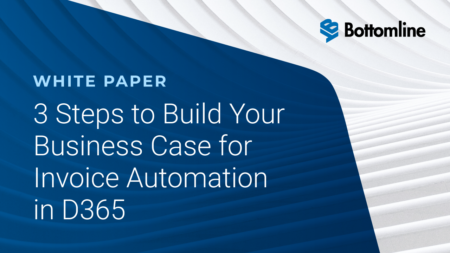During the Microsoft fiscal Q2 earnings call, Satya Nadella and Amy Hood revealed how Microsoft has become the world’s #1 cloud provider.
Search Results: ERP (3720)
Leveraging Microsoft Teams with SAP is now possible in a recent announcement from SAP and Microsoft. The goal is a “frictionless enterprise” that broadens collaboration within organizations and opens new possibilities to streamline. This announcement further builds on the partnership between SAP and Microsoft that was announced in 2019.
Oracle has one of the most compelling cloud stories of 2021 – let’s look at 10 predictions CEO Safra Catz made about its cloud businesses.
Google Cloud CEO Thomas Kurian discusses the impact of the cloud on business in 2021, new priorities for CEOs, and reimagining businesses.
Adobe and Microsoft recently announced the creation of C3 AI CRM software with the help of Microsoft Dynamics 365. This innovative AI-first CRM software is built for all types of industries while making it easy to integrate with Adobe Experience Cloud. All of this improves customer-facing business operations with predictive insights.
Workday is the only 2-CEO vendor among cloud leaders —and co-founder and co-CEO Aneel Bhusri is thrilled with his new working arrangement.
Making the business case for invoice automation is a top priority for industry leaders. This Bottomline whitepaper identifies 3 steps to your business case
This session is focused on the education of administering, adopting, and promoting the Power BI platform for an Enterprise solution. The overall success for an enterprise using Power BI comes not just from the skilled Power BI champions but how Power BI is deployed to an organization and maintained. Session topics include: adopting a framework for your BI team to govern & manage content in Power BI; utilizing workspaces for BI collaboration and organization of report content; creating a Power BI admin team who maintains and defines the intent of workspace environments; establish naming conventions for content (dashboards, reports) for end users; methods to help support and educate end users to adopt Power BI; and creating a internal BI support site.
Sana Commerce Cloud still offers the same advantages our tried-and-true ERP integration always has. But that’s not all. In addition to all the beloved benefits, capabilities, and features we kept from previous iterations of Sana Commerce, we also introduced quite a few new things that are completely fresh, cutting edge, and that put Sana at the forefront of e-commerce innovation (especially in B2B).
If you’ve invested in Microsoft Dynamics 365 Business Central, then you’ve already taken the first step toward a quick-to-deploy e-commerce experience powered by the business logic and data in your Dynamics 365 ERP. Integrated e-commerce with Sana Commerce
You’ve invested in Dynamics AX and made it the primary data hub for your business; don’t let all that work go to waste. Choose Sana for an e-commerce solution that leverages the integral data in your Dynamics ERP to build out sophisticated capabilities in your web store, improve processes, and future-proof your business.
Microsoft Dynamics GP e-commerce can put your company at the top of its game – if you use it correctly. With Sana, you can execute an e-commerce experience designed to make the best use of your ERP (for your business’ as well as for your customers’ gain) with real-time ERP data integration.
For most companies, having enough data to make smart decisions is not the problem; being able to access data and make use of it is an ongoing challenge. Gain greater insight into your organization by accessing the data in your ERP and other data sources to enable better long-term (strategic), short-term (tactical), and daily (operational) decisions with Power BI and other reporting tools.
With the Sana Commerce Customer Portal, the complete O2C cycle —from purchase to invoicing, and returns— is supported, streamlined, and enhanced by accurate, real-time Microsoft Dynamics ERP data. How? With our Customer Portal solution designed to do just that.
Manufacturers have always been challenged to reduce costs while improving quality, respond to customer needs and market demands, and, of course, make a profit. Increasing and more complex demands from trading partners, and growing involvement from overseas have made it imperative for manufacturers to take on a larger role in the supply chain. At ArcherPoint, we work with manufacturers every day to help them achieve these goals and more.
Today’s retailers need to be sharp: customers expect a seamless, personalized, unified shopping experience—from anywhere at any time. Channels and geographies are a moving target, changing and expanding every day. Competition is forcing you to look at every single aspect of your business to find ways to reduce costs while differentiating your brand and delivering an unforgettable customer experience. ArcherPoint offers end-to-end solutions that enables retailers to thrive.
Bluestar PLM for Microsoft Dynamics 365 for Finance and Operations or Microsoft Dynamics AX. You’ll be able to see for yourself how our ERP-based PLM product is suitable for your company and your daily operations/procedures. We’ll wrap up with a Q&A session with several of our existing customers who can share how easy it has been to build various scenarios in response to COVID-19.
If you are just getting started with Power BI you may be seeing a lot of references to a ‘Calendar’ Table or ‘Date Table. Maybe you already have a handle on this aspect of PBI, but a lot of people seem not to understand how to get started. If you forego having a ‘Calendar’ Table altogether, you can end up having a very cumbersome file and you won’t be able to take advantage of many of the awesome date/time functions offered through Power BI. There are quite a few good resources already out there.
Does your organization “own” perpetual licenses for your ERP software? Do you have aging on-premise servers in an IT closet somewhere in your business and wonder if now is the right time to venture into the cloud? Your are not alone! Check out this blog for perspective and ideas to help you manage the ambiguity of considering a cloud migration!
We get the most value from Power Platform when we truly embrace it as a platform. In other words, while the component parts — Power BI, PowerApps, Flow, Common Data Service, and even Dynamics — are incredible tools in their own right, the more we knit them together, the more valuable they become.
But how do larger organizations truly adopt that platform at scale? How do we maturely infuse enterprise management, governance, and best practices into our adoption such that we empower our business users to buil




















